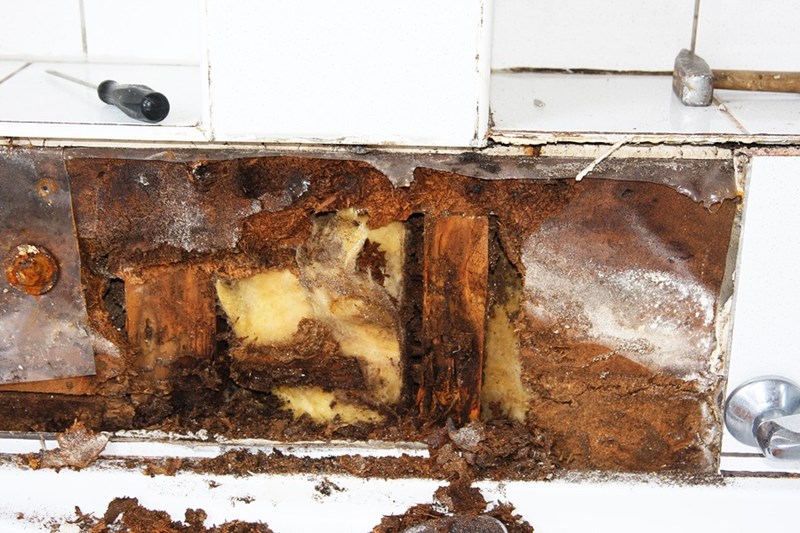Nearly everybody has their own unique way of thinking with regards to Common Causes of Water Damage in a Bathroom.

The washroom is incredibly at risk for damp buildup as well as prospective water damages due to the regular use of water in it. This post supplies easy examination techniques to aid spotting water damages hazards.
The regular use water in the shower room makes it incredibly vulnerable for wet build-up and also prospective water damages. By examining it on a regular basis, you can reduce water related damages.
The adhering to set of evaluations is very easy to perform and must be done once in every three months in order to keep your washroom healthy and to avoid possible water damages triggered by the bath tub, the shower, pipe joints as well as plumbing, sinks, closets, and the bathroom
Do not forget performing these evaluations as well as be thorough while performing them. Keep in mind that these basic examinations can save you a lot of cash by giving very early indications for water damage
Tub and also Shower
The shower and also bathtub need special focus and also upkeep. Examine the tiles and replace if broken. Make certain that there is no missing out on cement in between the floor tiles. Examine as well as replace split caulking at joints where the wall surfaces fulfill the flooring or the bath tub. Clogged drains and pipes issues will stop the tub from drying out and also might show serious problems beneath the bathtub. Speak with an expert right away to avoid architectural damages. Focus on stainings or soft locations around the tub walls as they may suggest an interior leak.
Plumbing
Signs for water damage are hard to spot since most pipes are installed inside the wall surfaces.
Pay unique focus to floor covering as well as walls wetness and stains as they may show an unseen plumbing trouble. Examine wetness levels in adjacent spaces also.
Sinks as well as Cabinets
Sinks and cabinets are revealed to dampness as well as humidity daily and also are usually ignored. Examine routinely under the sink and also on the kitchen counter above it. Repair any drip in the catch as it may suggest drainpipe troubles. Browse the sink, slow draining pipes might suggest a blocked drainpipe. Change sink seals if they are broken or loosened.
The Commode
The bathroom is a vulnerable water joint. Check the water lines and look for leaks around the toilet seat, in the pipe, and under the water tank. If you find any kind of signs of dampness on the floor around the commode, check for leakages in the toilet rim and also storage tank seals.
Realize that hanging bathroom dish deodorants raises the possibilities for blockages.
Water Damage Signs In The Bathroom To Avoid Cleanup
Musty smell
This is one of the easiest signs to catch because musty smells are so odorous. The damp, earthy, moldy smell should be a big red flag. The smell will develop when moisture gets trapped in surfaces, and begins to facilitate mold growth. Leaking pipes under cabinets, inside walls, and behind shower fixtures will cause moisture to stay trapped and not dry, which will lead to mold growth and spread. As soon as you notice any musty smells in your bathroom, have it checked for hidden water damage and cleanup signs.
Visible mold
If the smell isn’t there to give it away, sometimes you will actually see mold growth. Finding mold in your bathroom is a serious problem, because mold is very harmful to your health. By the time mold growth is visible, it also means that water damage has already occurred and been present for some time. The only way the mold problem can be resolved is to find the source of the moisture and get it stopped. To safely and adequately remove mold, you need to have professionals handle the remediation. Do not waste any time in getting mold problems addressed, fixed, and sanitized so that you can protect you and your family from the many respiratory symptoms caused by mold exposure.
Damaged floors
Bathroom floors should be able to withstand some exposure to water while still remaining in good condition. However, when excess exposure or water leaks occur, they will begin to damage even the most water-resistant flooring. If you notice any cracking, bubbling, staining, or warping on your bathroom floors, there is probably a water leak somewhere causing the distortion. If you notice areas of the floor have become softer, or even have a spongy feeling, there is probably damage to the subfloor. Subflooring is typically made up of plywood. When plywood is exposed to water or moisture, it will absorb it. Once it has become saturated, the weight of the excess water will cause the wood to swell and soften. Check the floors in your bathroom frequently to catch any of these sings before they lead to damaged subflooring.
Changes on walls
When water leaks behind walls, it will cause changes in the drywall. Peeling plaster, blistering paint, and soggy wallpaper are all good indicators that excess water is building up behind the wall. Water leaking behind drywall will cause it to swell and be soft to the tough. If you start to notice gaps along the trim of your walls, or where tile meets the wall, it could also be a strong indicator that there is a leak behind the wall. Any changes, distortion, or damage on the walls should be evaluated as soon as you notice it to prevent further water damage and cleanup.

We were guided to that report on Common Causes of Water Damage in a Bathroom through a good friend on a different web address. Liked our blog? Please share it. Let another person check it out. Thanks a lot for your time. Don't forget to come by our blog back soon.
Make An Appointment
Comments on “Exactly How to Avoid Bathroom Water Damage”